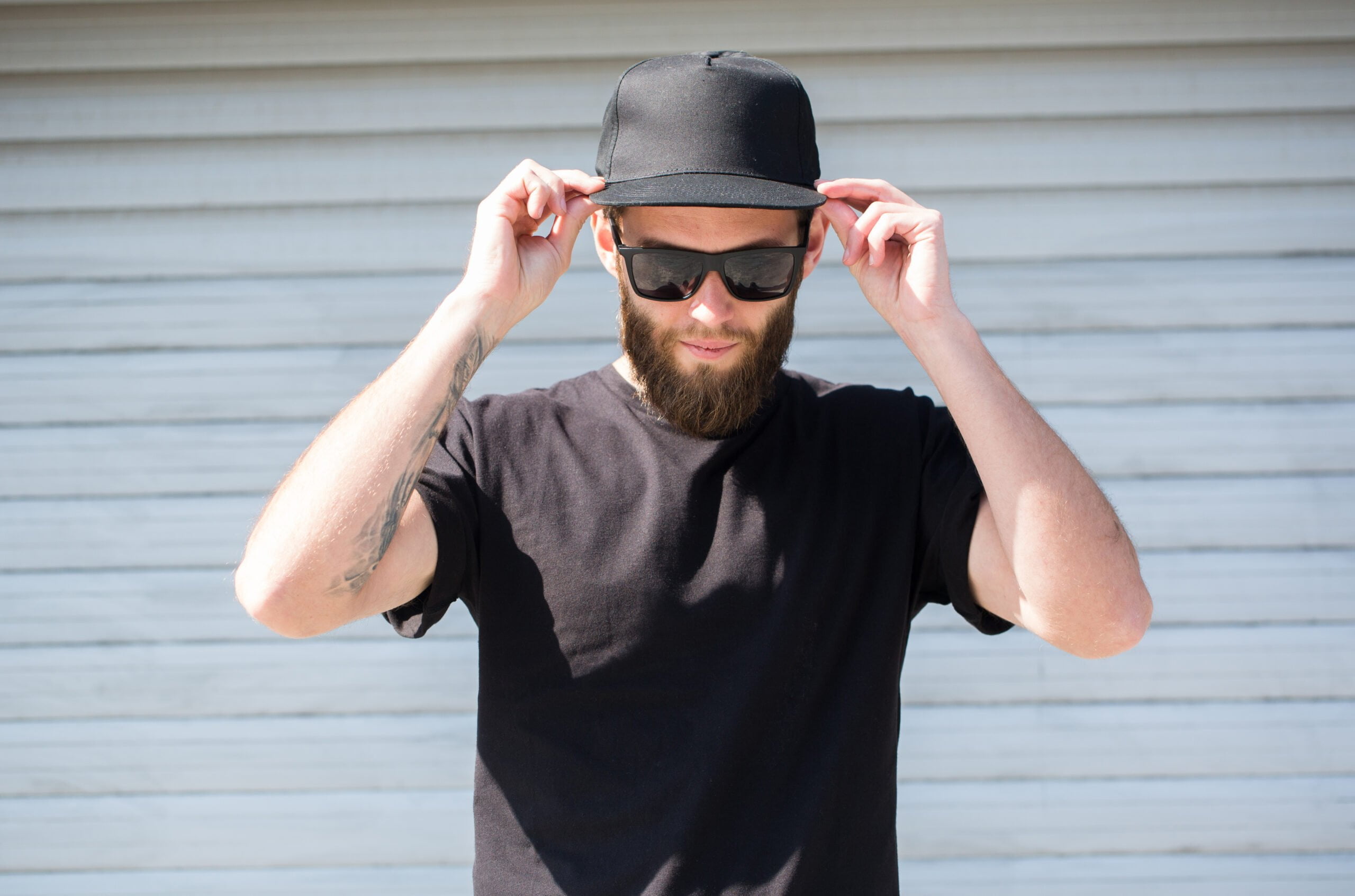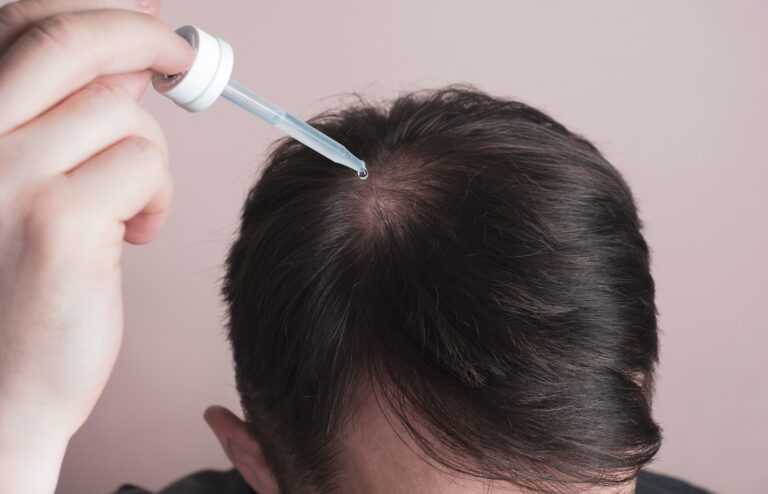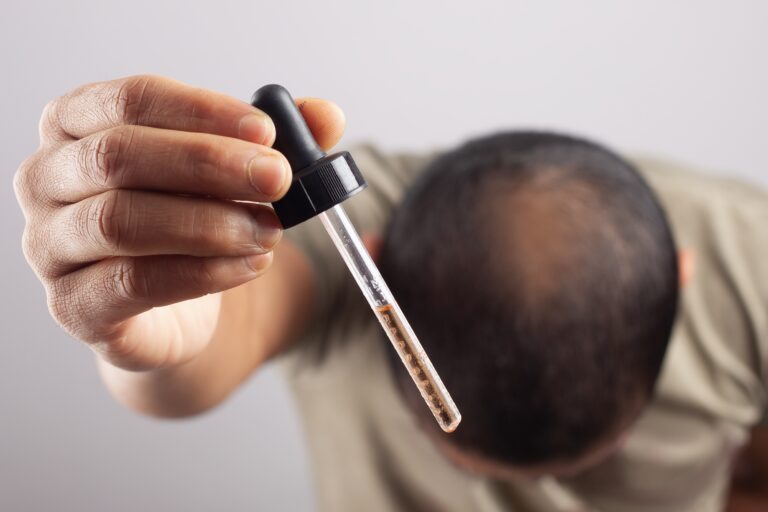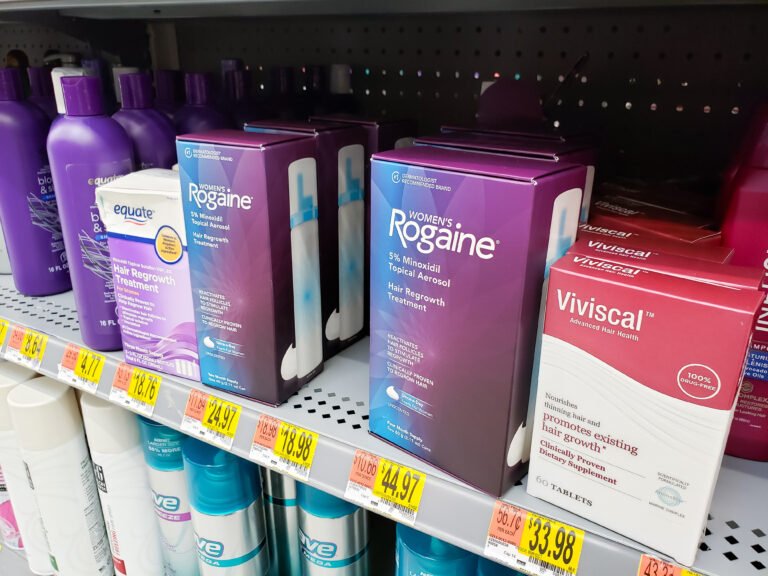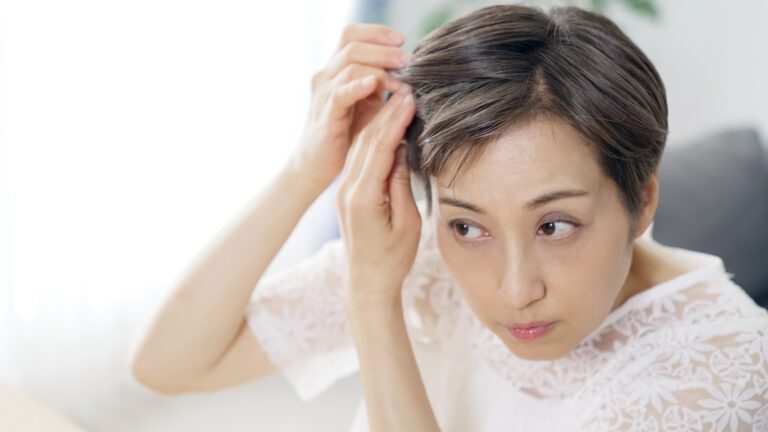9 Best Laser Caps & LLLT Devices for Hair Loss (2024)
Many of us enjoy taking care of our hair and styling it every morning. That’s why it can be a little disheartening when you realize that your scalp is thinning out.
Luckily, there are hundreds of gadgets on the market that can help you out. Let’s take a look at some of the best LLLT devices and laser caps for hair loss.
What Are the Best Laser Caps & LLLT Devices for Hair Loss?
Figuring out the best laser caps and LLLT devices for hair loss can take some work. There are many factors and variables to consider.
So, to help you out, we’ve compiled a list of some of the most popular gadgets on the market.
A couple of our top picks include the Capillus Plus and the Aphrona Laser Hair Regrowth. Let’s take a look at what makes these devices special.
We’ll also compare these products and discuss in detail their features, pros, and cons.
Our top 9 Picks:
- Best Overall: Capillus Plus
- Best Value: Aphrona Laser Hair Regrowth
- Best for Budget: iRestore Essential
- Best Hair Comb: HairMax Ultima 12 LaserComb
- Best for Travelling: Illumiflow 272
- Best for Sensitive Scalps: iHelmet
- Best for Convenience: Theradome PRO LH8- Laser Helmet
- Best for Comfort: iGrow Laser Helmet
- Best Laser Band: HairMax Hair Growth Laser Band
Each one of these devices has a feature that can help improve your hair situation. Whether you’re suffering from minor hair thinning or bald spots, we’ve got you covered.
1. Best Overall: Capillus Plus

- Dimensions: 12.83 x 4 x 2 in.
- Weight: 5.45 lb.
- Wavelength: 650 nm.
- Diode Count: 202
If you’re looking for a speedy way to grow back hair, the Capillus Laser Cap Plus may be the way to go.
First off, you only need to wear the cap for five to six minutes per session. This should give the 202 diodes enough time to rejuvenate your scalp.
On top of that, within a few weeks of using the device, you should be able to notice a decrease in shedding.
Then, it only takes about 12 months for your hair to grow back. This is one of the fastest recovery rates of any other device on the list.
However, you do need to use the Capillus on a daily basis to see results. In addition, the cap is one of the most expensive models on the market.
To get around this issue, Capillus offers second-hand devices to its customers. They come with liner replacements and a half-off price tag.
Pro
- Decrease hair shedding within a few weeks
- Hair should begin to grow back within 12 months
- Sessions are only six minutes long
Cons
- Sessions have to occur daily
- More expensive than most other laser caps
2. Best Value: Aphrona Laser Hair Regrowth

- Dimensions: 7.83 x 7.05 x 3.46 in.
- Weight: 4.63 lb.
- Wavelength: 650 nm.
- Diode Count: 272
The Aphrona Laser Hair Regrowth is one of the most popular devices on the market. This is most likely due to its unisex design.
Aphrona looks like a regular cap that can work for both men and women. It also has a sleek construction that makes it ideal for everyday use.
You can pop the cap on, forget about it, and carry out your daily activities.
On top of that, the hat has 272 diodes spread out evenly. Each one will focus on a specific area of the scalp and stimulate the hair follicles.
This can help treat conditions like androgenic alopecia or female/male pattern baldness. In addition, some users report that the cap can reduce the oiliness of a scalp.
For the best results, you should use the Aphrona for about half an hour, three times a week. That should provide enough blood flow to the scalp to increase hair growth.
It’s important to note that it can take anywhere from 12 to 24 months for the result to show up.
Pros
- Contains 272 diodes that can help stimulate hair growth
- Can treat conditions like alopecia and pattern baldness
- Sleek design doesn’t get in the way of daily activities
Cons
- Cap fabric can degrade quickly over time
- Results can be a little slow
3. Best for Budget: iRestore Essential
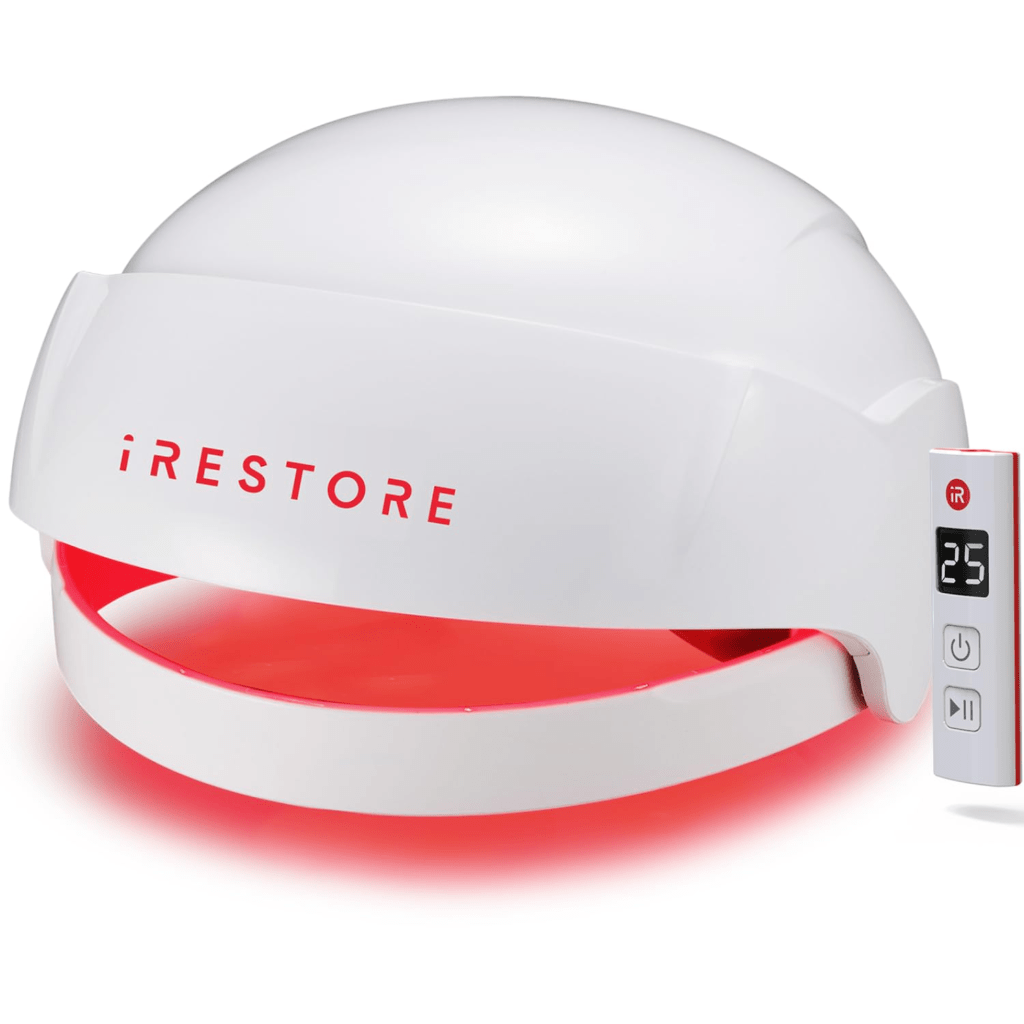
- Dimensions: 10.8 x 9 x 6 in.
- Weight: 1.74 lb.
- Wavelength: 600 nm.
- Diode Count: 120
As we all know, most LLLT devices are quite pricey. Although, that’s not the case with all laser hat hair growth gadgets.
The iRestore can deliver a similar performance to the Capillus, at half the price point.
It has 120 diodes, which is less than both the Capillus and the Aphrona. Yet, the placement of the lights ensures that you treat your entire scalp.
Once you unbox the iRestore, you have to plug it in to charge for a while. Then, the device is ready to use.
Ideally, it’s best to wear the cap for about half an hour every other day. This should give you results within six to eight months.
At that point, hair shedding should have decreased significantly. Then, by the end of a full year of usage, you’ll begin to see new hair growth.
On top of that, because of how lightweight the cap is, it’s easy to carry around. However, the design of the laser hat is a little bulky.
This makes it a little tricky to store the device. In addition, some users complain that it can be uncomfortable to wear after a few minutes.
Pros
- Can deliver great performance at a low price point
- Hair shedding should stop within six to eight months
- Has a pause and resume button to control the treatment
Cons
- Design is bulky and a little difficult to wear for long periods
- Device has a cord that makes moving around tricky
4. Best Hair Comb: HairMax Ultima 12 LaserComb
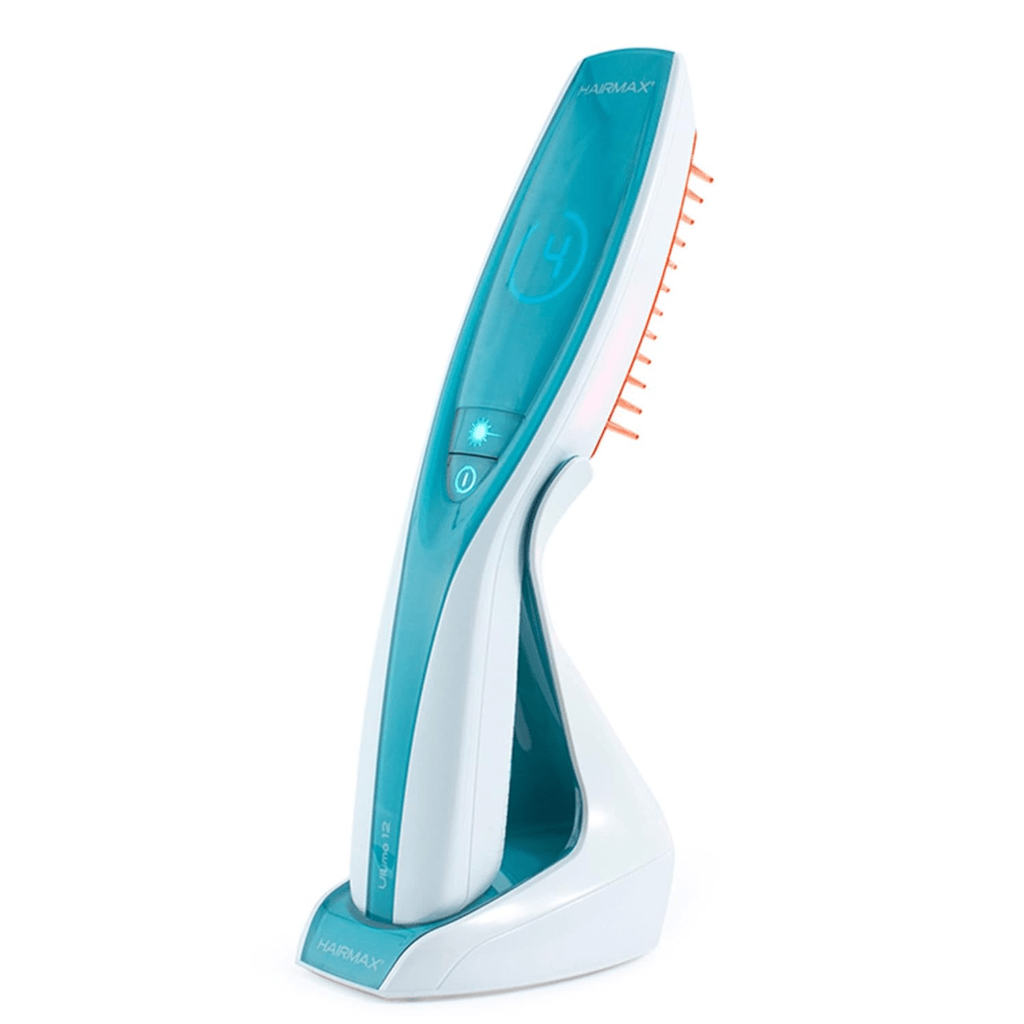
- Dimensions: 11.85 x 9.02 x 7.95 in.
- Weight: 2.65 lb.
- Wavelength: 655 nm.
- Diode Count: 12
Some people find it challenging to wear a laser cap for long periods. The heat from the diodes can become overwhelming and uncomfortable.
If that’s the case, you may want to try out the HairMax LaserComb. As you can guess by the name, this comes in the form of a brush with bristles.
At the base of the comb, you’ll find a collection of 12 diodes that can stimulate hair growth. You may be thinking that 12 is a tiny number, compared to other devices on the list.
While that’s true, these diodes are all you need. As you brush through your hair with the HairMax comb, the lights should get a chance to go over your entire scalp.
In addition, you don’t need to use the device for long. All it takes is about eight minutes, three days a week, to regrow your hair.
This comb is especially useful for people who want to spot-treat their scalp.
The major drawback of this device is the manual operation. Your hands have to move constantly around your scalp during the treatment.
So, your arm may need a rest halfway through the session. Plus, the brush is plastic, which can’t handle much wear and tear.
Pros
- Device operation is only eight minutes, three times a week
- Brush can detangle hair while stimulating the scalp
- Excellent for spot treatment in male pattern baldness
Cons
- Your hand needs to be in constant motion over your scalp
- Plastic casing can’t handle a lot of wear and tear
5. Best for Travelling: Illumiflow 272
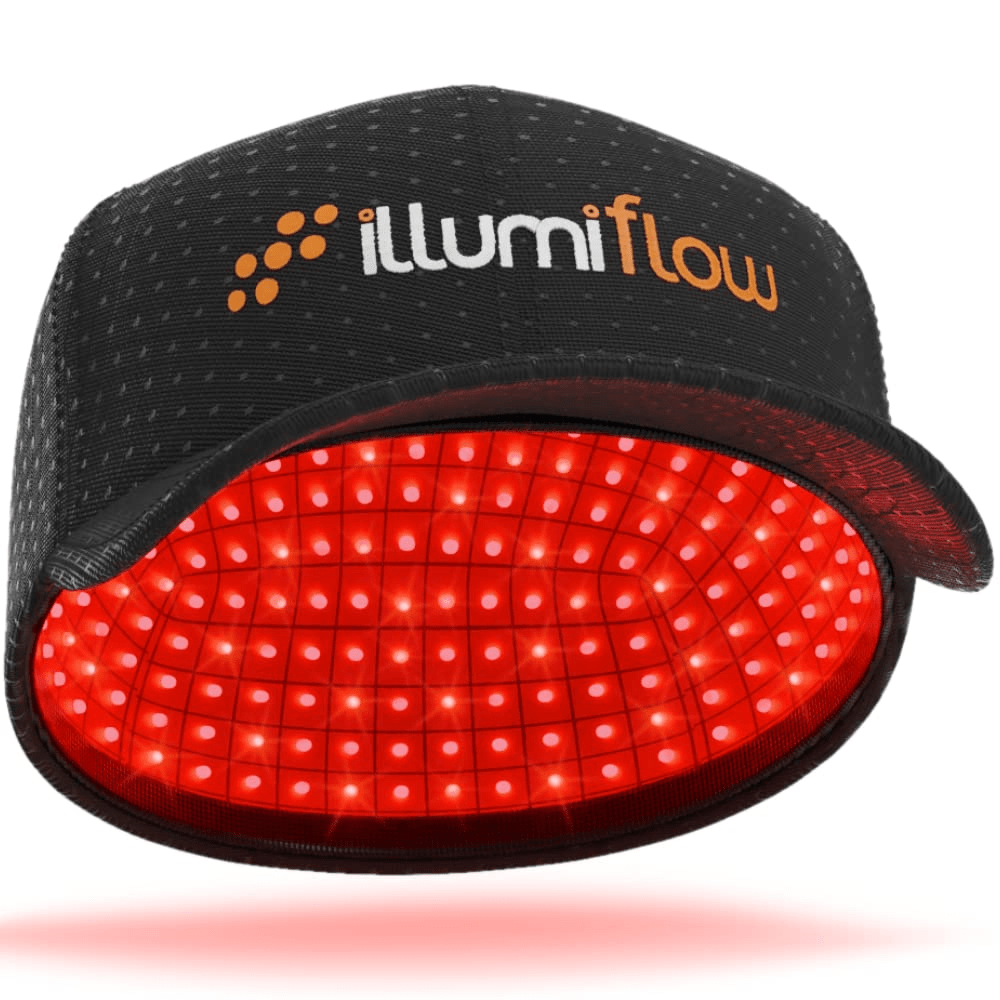
- Dimensions: 7.63 x 6.75 x 3 in.
- Weight: 0.58 lb.
- Wavelength: 650 nm.
- Diode Count: 272
When you’re always on the go, hair care tends to take a back seat. However, that doesn’t have to be the case.
With the Illumiflow 272, it’s possible to work on rejuvenating your scalp while you travel. You can purchase a small bag for the device to make carrying it around easier.
Moving on, just like the Capillus and the iRestore, this device comes in the form of a cap.
Yet, the Illumiflow is much lighter than both devices. Even though it’s not as heavy, it still has 272 diodes that can cover your entire head all at once.
Another amazing feature of this gadget is the warranty. For the first six months of use, you can return the device free of charge if you don’t see results.
On top of that, users get a whopping five-year extended warranty for the gadget. The manufacturers will repair or replace your device in case of malfunction for a small fee.
Ideally, you should use the Illumiflow for 30 minutes every three days for the best results.
Pros
- Lightweight, which means it’s easy to carry around and travel with
- Contains 272 to cover the entire head at once
- Comes with a six-month money-back guarantee
Cons
- Repair fees for the device even inside the extended warranty period
- Accessories like the small bag come separately and at an extra cost
6. Best for Sensitive Scalps: iHelmet
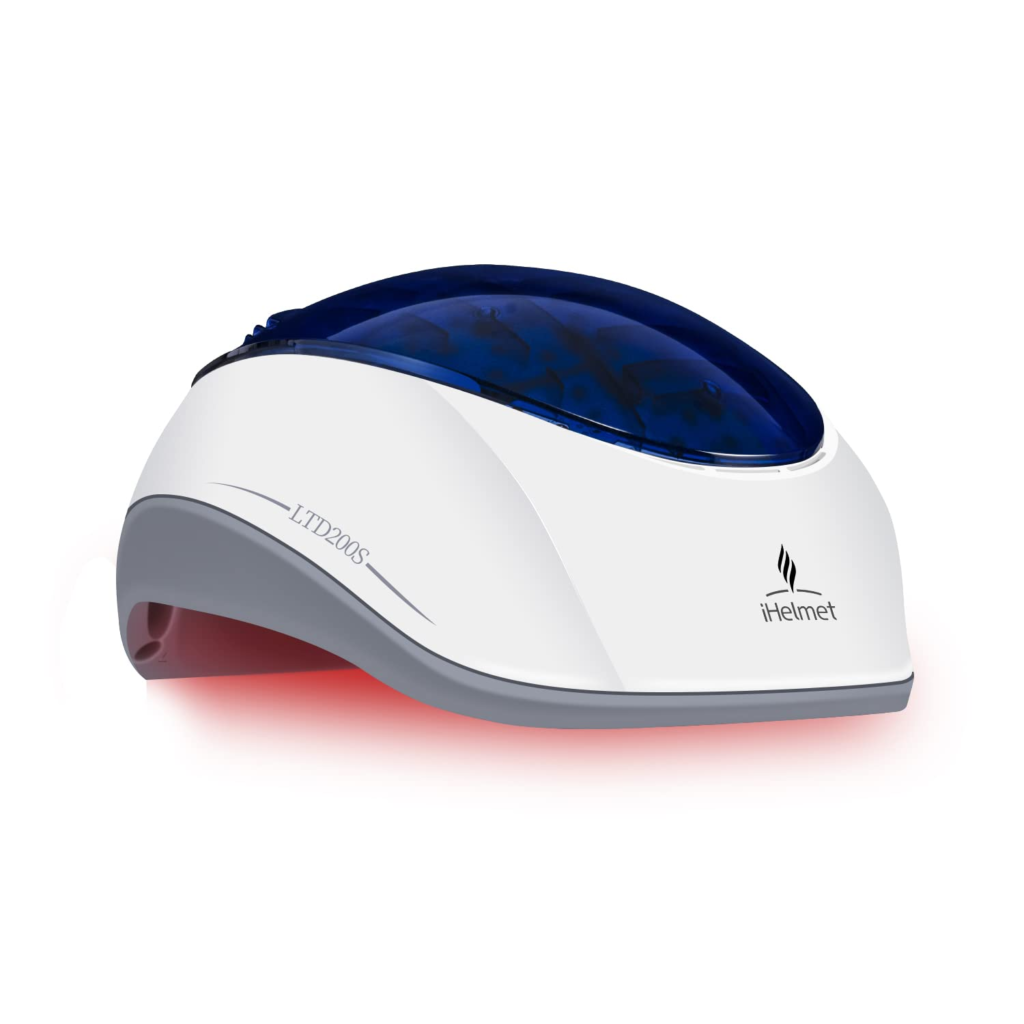
- Dimensions: 12.75 x 9.38 x 5.75 in.
- Weight: 3.7 lb.
- Wavelength: 650 nm.
- Diode Count: 88
If you have a particularly sensitive scalp, you may want to check out the iHelmet. This LLLT device comes with an incredibly useful safety detector.
The feature will measure the temperature of your head in real time. Once it exceeds the safe limit, the gadget will automatically power down.
This will ensure that users don’t develop any rashes or minor burns. Besides that, you can also control the iHelmet using your smartphone.
The accompanying app allows you to set a timer and chart your progress. That makes setting the device for half an hour, three times a week, a breeze.
Unfortunately, one of the major disadvantages of iHelmet is the number of diodes. With only 88, it can be tricky to reach all the areas of your scalp.
Other than that, the helmet design is bulky, which can be uncomfortable.
Pros
- Contains a safety detector that can read scalp temperature
- Automatic shut down if the temperature exceeds the maximum limit
- Accompanying app allows you to see your progress and set timers
Cons
- Only 88 diodes for the entire scalp
- Isn’t compatible with people who have darker skin tones
7. Best for Convenience: Theradome PRO LH8- Laser Helmet
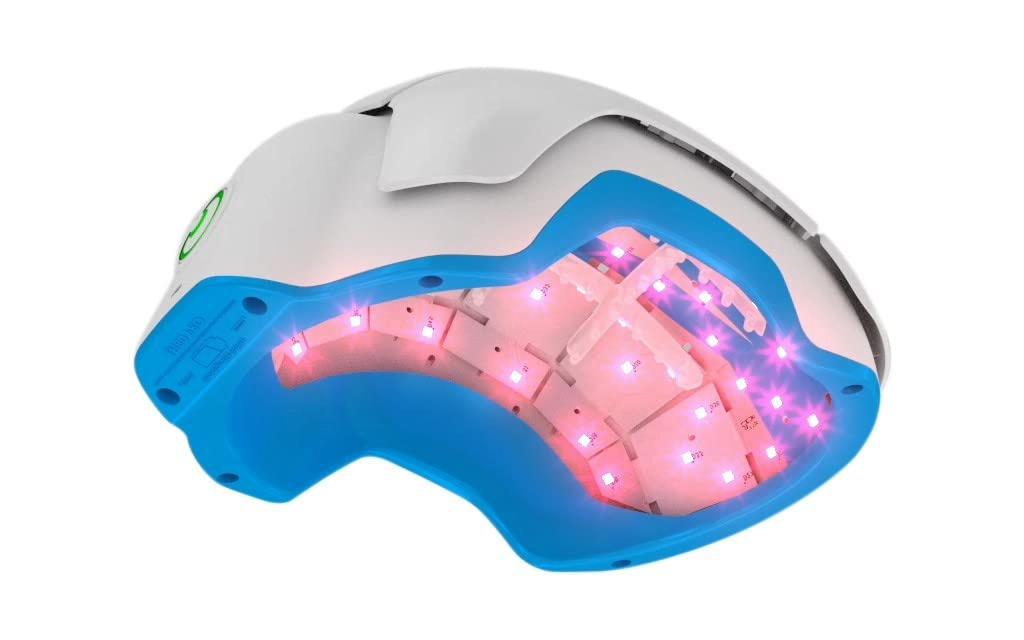
- Dimensions: 11.61 x 7.87 x 5.12 in.
- Weight: 1.48 lb.
- Wavelength: 680 nm.
- Diode Count: 80
One of the major drawbacks of LLLT devices is how often you need to use them. Most of the gadgets on our list need consistent use for at least three times a week.
With Theradome, you’ll only need to use the LLLT device for 20 minutes twice a week. This should be enough to get your hair growing in no time.
The device has about 80 diodes, which is less than the Capillus and the iHelmet. However, the diodes operate at a much higher wavelength.
Instead of the traditional 650 nm, Theradome uses 680 nm. This will better stimulate hair follicles and allow them to regenerate faster.
Moving on, to ensure your scalp doesn’t overheat, the helmet comes with many ventilation holes. These let air flow through the cap to cool you down.
Aside from that, operating the device is simple with only one button to power it on. Sadly, the touchpad is a little finicky and may falter.
On top of that, the construction of the helmet isn’t all that sturdy and can dent easily.
Pros
- Uses 80 diodes with 680 nm wavelength for effective stimulation of the follicles
- Can control the device with only one button
- Ventilation holes allow air to flow and stop the scalp from overheating
Cons
- Touchpad isn’t stable and can stop working out of nowhere
- Helmet construction lacks sturdiness and can bend out of shape
8. Best for Comfort: iGrow Laser Helmet
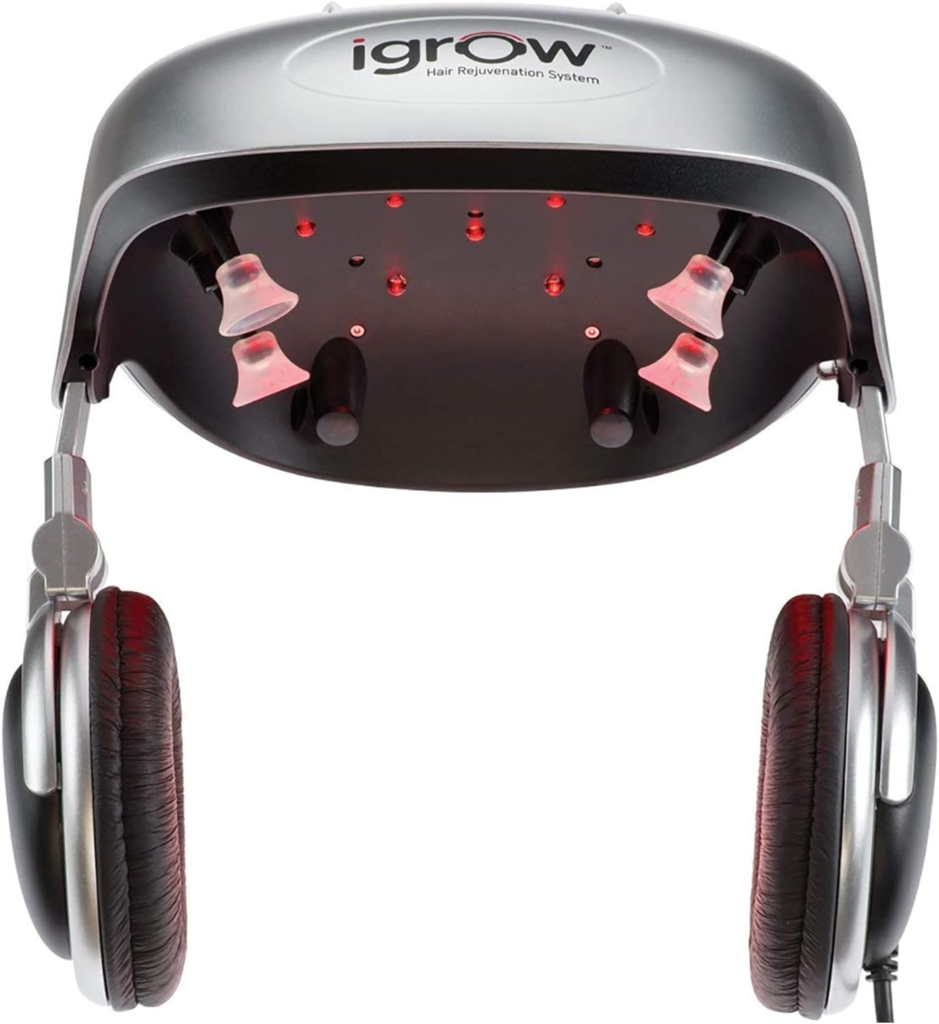
- Dimensions: 12.2 x 5.91 x 9.84 in.
- Weight: 3.97 lb.
- Wavelength: 655 nm.
- Diode Count: 51
If you’re not a fan of wearing a full helmet on your head, you may want to check out the iGrow Laser Helmet.
This LLLT device covers the top portion of the head, from the temple to the crown. Everything below that point is out in the open air.
Inside the helmet, you’ll find suction cups that help the gadget stay in place. This makes it possible to wear the iGrow while you work out.
For the best results, use the helmet every other day for about 25 minutes.
That’s not all. The most impressive feature of the device is the built-in headphones. You can connect any portable music player to the helmet and enjoy your favorite music.
Unfortunately, if you decide to use the headphones, you’ll need to use the wire that comes with the helmet. That will slightly limit your range of motion.
In addition, since the device only covers the top of your head, there isn’t much room for diodes. This helmet only contains 51 lights, which is less than half of other models like the iRestore.
Pros
- Only covers the top portion of the head, which makes it comfortable to wear
- Includes suction cups to keep the gadget in place
- Comes with built-in headphones so you can enjoy music during treatments
Cons
- Using the headphones may limit your range of motion because of the cord
- Contains 51 diodes only
9. Best Laser Band: HairMax Hair Growth Laser Band

- Dimensions: 11.5 x 9.5 x 4.75 in.
- Weight: 3.2 lb.
- Wavelength: 650 nm.
- Diode Count: 82
More often than not, when someone experiences hair loss, it’s localized in a specific area. This could be at the hairline or the crown of the head, for example.
In that case, you won’t need a full helmet for treatment. Instead, it may be best to use a target LLLT device like the HairMax Laser Band.
This gadget is a curved strip of plastic with 82 diodes covering the inner surface.
One of the major benefits of this device is its speedy operation. You only need to use the diodes for about two minutes every other day for great results.
Within six months, you should see signs of hair growth, or you get your money back.
The only issue with the device is that it can overheat quickly. Leaving it on for too long may cause sweating and, in some cases, rashes.
Pros
- Band allows you to target specific areas of the head
- Uses 82 diodes in a small area to stimulate follicles
- Six-month money-back guarantee
Cons
- Band overheats quickly and may cause excessive sweating
- Requires multiple passes to cover the entire head
Finding the Best Laser Caps & LLLT Devices for Hair Loss
When picking out a Laser Cap or LLLT device, there are a couple of factors you should be aware of.
Diodes
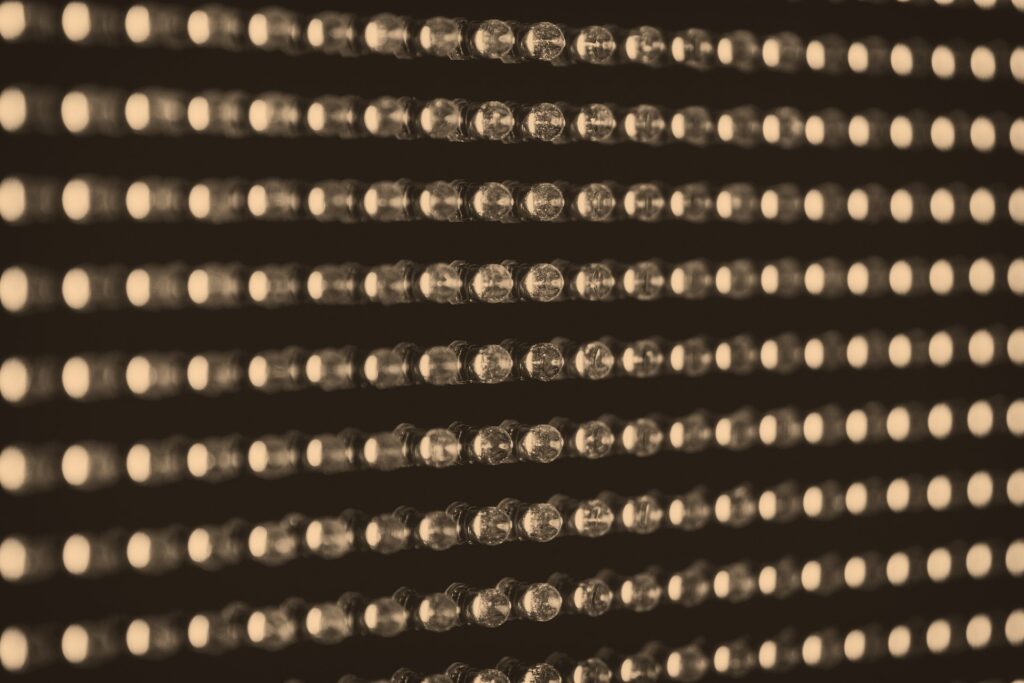
LLLT stands for Low-Level Laser Therapy. We use weak light waves to stimulate the scalp, which can increase hair growth.
To do that, we need diodes. These are small components that can emit specific rays of light.
Typically, with an LLLT device, we use red beams or near-infrared lasers. This is perfectly suited to improve blood circulation in the scalp.
As you can imagine, the more diodes a device contains, the more effective it’ll be. Although, too many lights can lead to overheating and even rashes.
Wavelengths
Another factor you should be aware of is the wavelength of the light an LLLT device uses. As this number increases, so does the light’s ability to penetrate your skin.
For that reason, laser caps with high wavelengths tend to be more effective.
Frequently Asked Questions
Is It Normal to Shed When Using a Laser Cap or LLLT Device?
Yes, most people will experience some shedding when they first use a laser cap. However, this should quickly subside within a few weeks.
If the shedding continues, stop using the LLLT device and contact a dermatologist.
How Long Does It Take for Results to Show Up With Laser Caps or LLLT Devices?
Typically, it can take anywhere from six months to a year for your hair to start growing. However, this will depend on the device you’re using.
Make sure to read the user manual carefully to help you figure this out.
What Are the Side Effects of Laser Caps and LLLT Devices?
For the most part, there should be no side effects to using a laser cap. Although, some users report having mildly sensitive scalps after a while of use.
Laser Caps and LLLT Devices for Hair Loss: Final Thoughts
In conclusion, the best laser caps and LLLT devices for hair loss are Capillus and Aphrona. Both these gadgets should be able to help you grow back your hair in no time.
Still, before you purchase a device, you should check a couple of factors. That includes the number of diodes and the operating light wavelength.

